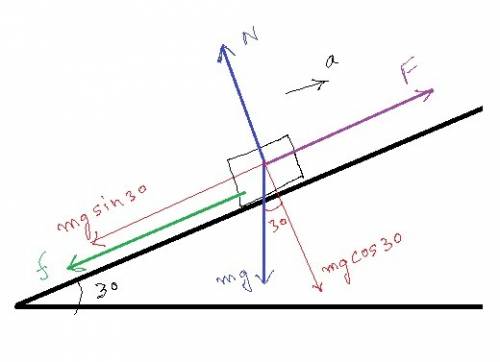
Physics, 30.06.2019 11:30 Mtovar7713
A15.0 m long plane is inclined at 30.0 degrees. if the coefficient of friction is 0.426, what force is required to move a 40.0 kg mass from rest at the bottom on the plane to the top of the plane with a final velocity of 8.00 m/s?

Answers: 1


Another question on Physics

Physics, 21.06.2019 18:00
Acommercial passenger jet can travel up to 970 km/hr at an altitude of 30,000 feet. at this speed, how long will it take the jet to travel 1,865 kilometers? a. 2.3 hrs b. 1.9 hrs c. 1.7 hrs d. 1.5 hrs
Answers: 1

Physics, 22.06.2019 05:50
High schoolphysics 5+3 pts a neon light consists of a glass tube with metal wires at each end. when connected to a high-voltage source, the gas glows. if a fly lands on the glass tube, what will most likely happen? a) the fly will not feel a shock because the glass conducts any free electrons back into the gas. b) electrons will flow directly from the metal wires along the glass and shock the fly. c) the fly will not feel a shock because the glass insulates it from the electrons in the gas and the metal. d) electrons that are moving through the gas will be conducted through the glass and shock the fly.
Answers: 3

Physics, 22.06.2019 15:30
To understand the electric potential and electric field of a point charge in three dimensions consider a positive point charge q, located at the origin of three-dimensional space. throughout this problem, use k in place of 14? ? 0. part adue to symmetry, the electric field of a point charge at the origin must point from the origin.answer in one word.part bfind e(r), the magnitude of the electric field at distance r from the point charge q.express your answer in terms of r, k, and q. part cfind v(r), the electric potential at distance rfrom the point charge q.express your answer in terms of r, k, and q part dwhich of the following is the correct relationship between the magnitude of a radial electric field and its associated electric potential ? more than one answer may be correct for the particular case of a point charge at the origin, but you should choose the correct general relationship. a)e(r)=dv(r)drb)e(r)=v(r)rc)e(r)=? dv(r)drd)e(r)=? v(r)r
Answers: 2

Physics, 22.06.2019 18:30
Daughter element the new element produced along with a decay particle in a nuclear transmutation 2. half-life the substance that decays in a nuclear transmutation 3. parent element the change of one chemical element into another by nuclear decay or radioactive bombardment 4. transmutation the time required for the decay of one-half of the atoms in a sample of radioactive material
Answers: 2
You know the right answer?
A15.0 m long plane is inclined at 30.0 degrees. if the coefficient of friction is 0.426, what force...
Questions


History, 21.07.2019 12:40



Mathematics, 21.07.2019 12:40


French, 21.07.2019 12:40

Mathematics, 21.07.2019 12:40

History, 21.07.2019 12:40


Biology, 21.07.2019 12:50



Health, 21.07.2019 12:50






History, 21.07.2019 12:50




